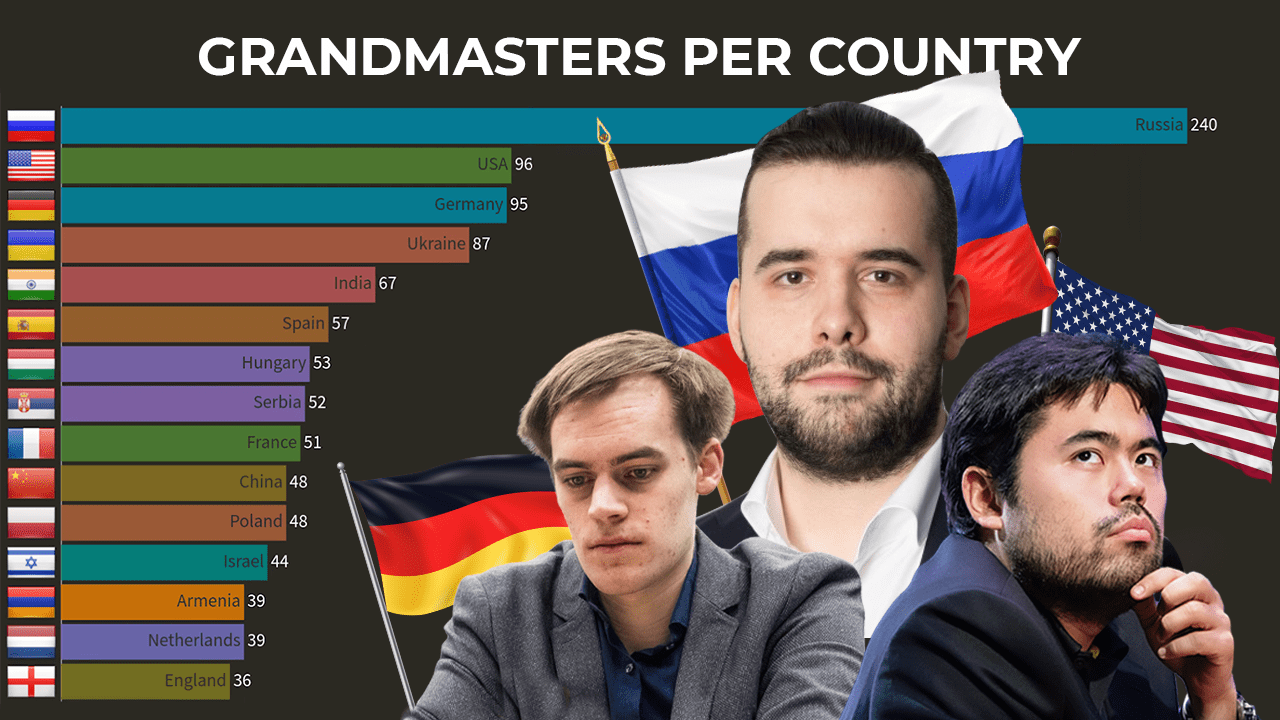
Countries With The Most Chess Grandmasters
I put together a video that that showed how the number of grandmasters in the top countries has grown over the years. It's essentially a visual representation of a familiar historical theme, one we discussed recently. Chess.com created a video from this information (see below).
The video begins with the Soviet Union on top, and it stays there until its political transition period in the early 1990s, after which Russia emerges #1 for the remainder of the clip.
The concept of a chess grandmaster is often traced back to the 1914 St. Petersburg tournament, where two Germans, a Russian, a Cuban, and an American—Emanuel Lasker, Siegbert Tarrasch, Alexander Alekhine, Jose Capablanca, and Frank Marshall—reached the playoff stage. As Edward Winter has pointed out, the term actually dates back to at least 1838 according to the Oxford Companion to Chess while contemporary reports of Czar Nicholas II bestowing the title at St. Petersburg 1914 are yet to be discovered.
In Russian chess parlance of the time, the term Grossmeister referred to any player who won a big international tournament, and every player who took part in the 1914 tournament was a Grossmeister in that sense of the word, which is why it was referred to in the Russian press as Grossmeister tournament. This may have contributed to the later reports in some way.
In any case, "Grandmaster" wasn't an official title until 1950, when FIDE awarded it to that year's world championship candidates as well as several living greats who were largely past their prime. Of these 27 players in total, the Soviets claimed 11 (all 11 already had the internal "USSR Grandmaster" title), with no other country picking up more than a couple. That was only a sign of what was what to come for Soviet/Russian dominance of chess.
For the first few decades, the Soviets more than doubled any other country. In the late Soviet period, the United States and Yugoslavia began to catch up, somewhat, with Hungary also in the mix. From 1978-87, those first two countries combined outdid the Soviets, reaching a peak in 1985 with a 68-60 edge. From 1975 until the end of the USSR, Yugoslavia (a country that itself eventually split back into several nation states) consistently had more than half as many GMs as the Soviets.
When the USSR collapsed, Russian chess did not suffer. It exploded instead, and by 1999 Russia was doubling up everyone, just as the Soviets had before the mid-1970s. A 104-51 margin over the second-place United States in 1999 grew to 128-57 by 2002.
In the 2010s, Russia continued to lap the field, leaving the United States, Germany, and Ukraine to jockey for a distant second position. Russia's 240 grandmasters when the video ends in 2021 represent exactly 2.5x of the United States in second and nearly 3x of fourth-place Ukraine. Here is the data used in the video in a google sheet.
Do any of these numbers surprise you? Let us know in the comments below!





